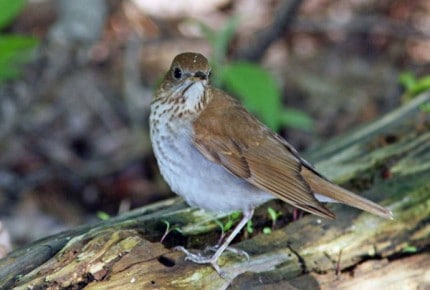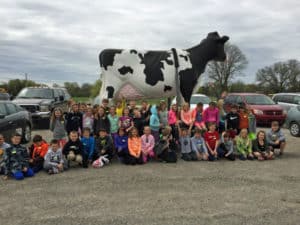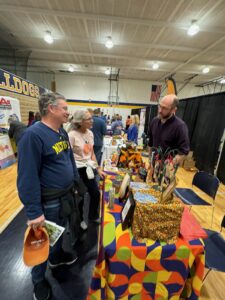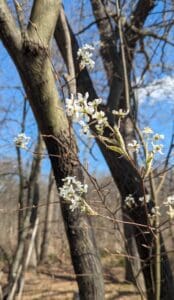
(Chelsea Update would like to thank Tom Hodgson and the Waterloo Natural History Association for the information and photos in this column.)
The most successful bird watchers know that it is just as important to know birds by sound as by sight as many birds are often heard before they are seen. Such is the case for four shy singers whose distinct songs are currently filling area woodlands. All four were once common when much of Southern Michigan was covered by forest, and all suffered declines after wooded lands were cleared, or fragmented into small isolated sites.
Fortunately for those living in the Chelsea area, the nearby Waterloo Recreation Area includes thousands of acres of mature woodlands that provide an important habitat reservoir for these forest dwelling species. So much so that these birds are beginning to expand into scattered woodlots that border local farms and neighborhoods. Their names, wood thrush, veery, red-eyed vireo and ovenbird describe something interesting about each.
If you don’t hear them near your home, walk the trails at the Discovery Center where you can hear them all.
The wood thrush should appeal to both early risers and night owls as it does most of its singing in early morning and late evening. Its flute-like song is said to be one of the most beautiful in the bird world. This bird can sing two notes at once, each in perfect harmony with the other.
In June 1853, Henry David Thoreau wrote of wood thrush: “This is the only bird whose note affects me like music. It lifts and exhilarates me. It is inspiring. It changes all hours to an eternal morning.”
To hear the wood thrush, click on this link.
The veery is another member of the thrush family. Its name comes from an attempt to verbally describe its ascending song. A good dawn and dusk singer, it can also be heard during the day. Its cinnamon brown back provides it with excellent camouflage as it searches for insects along the forest floor. This woodland bird prefers lower, wetter habitats. It nests on the ground or in low shrubbery. To hear the veery’s song, click here.

The ovenbird gets its name from its unique nest which is built among the leaves on the forest floor. The female weaves the cup, side entrance, and roof of her domed nest from the inside as a single, integrated piece. Then she drops leaves and twigs on top to hide it. When finished, it resembles one of the outdoor ovens early settlers built for summer baking. It is extremely well camouflaged and very difficult to find.
The males loud, staccato teaCHER, teaCHER, teaCHER song inspired Robert Frost to write these lines, “There is a singer everyone has heard, / Loud, a mid-summer and a mid-wood bird, / Who makes the solid tree trunks sound again, the ovenbird.” To hear the ovenbird’s song click here.
Last, but not least, the red-eyed vireo may hold the record for the most incessant singer, repeating its song up to 20,000 times per day. This is another woodland dweller, that builds a nest in a low shrub often just a few feet off the ground. Although named for its eye color, one must be very close in order to see it. To hear the red-eyed vireo, click here.
Enjoy birds songs while you can as most will become quiet by the end of June to be replaced for the remainder of the summer by the buzzing and chirping of insects.















